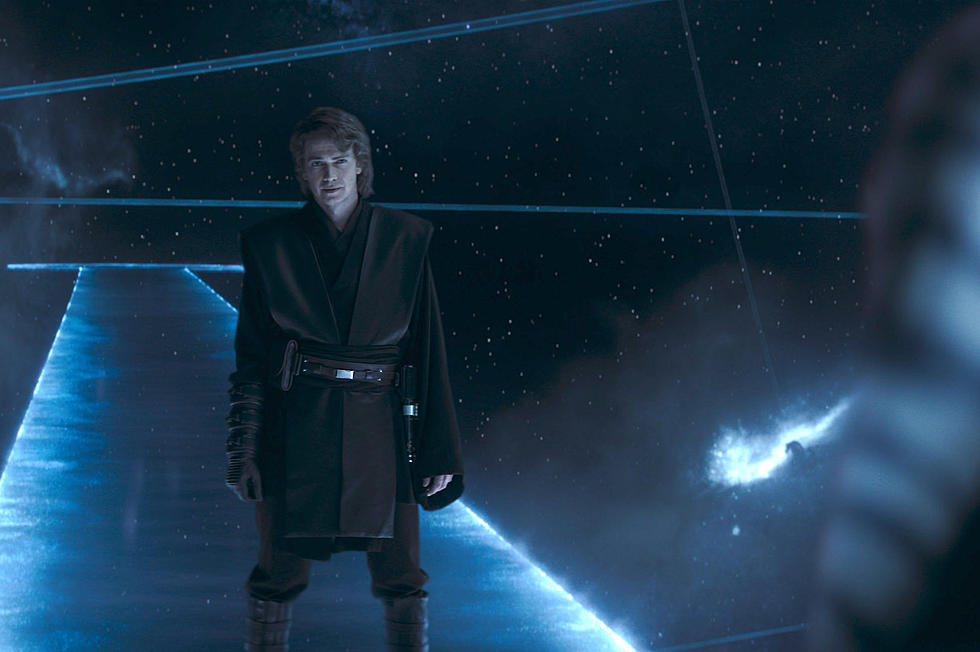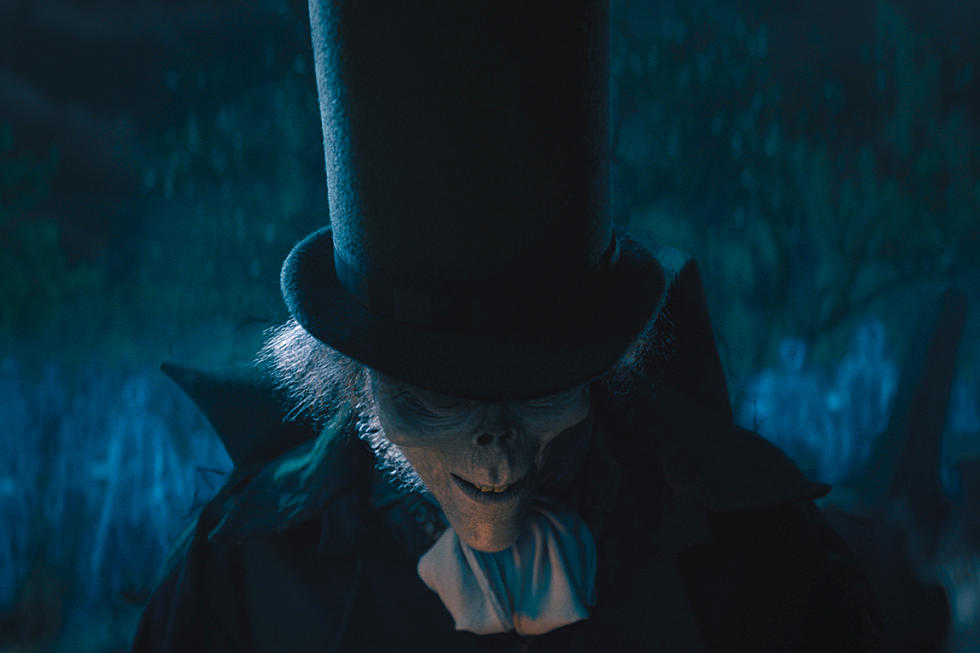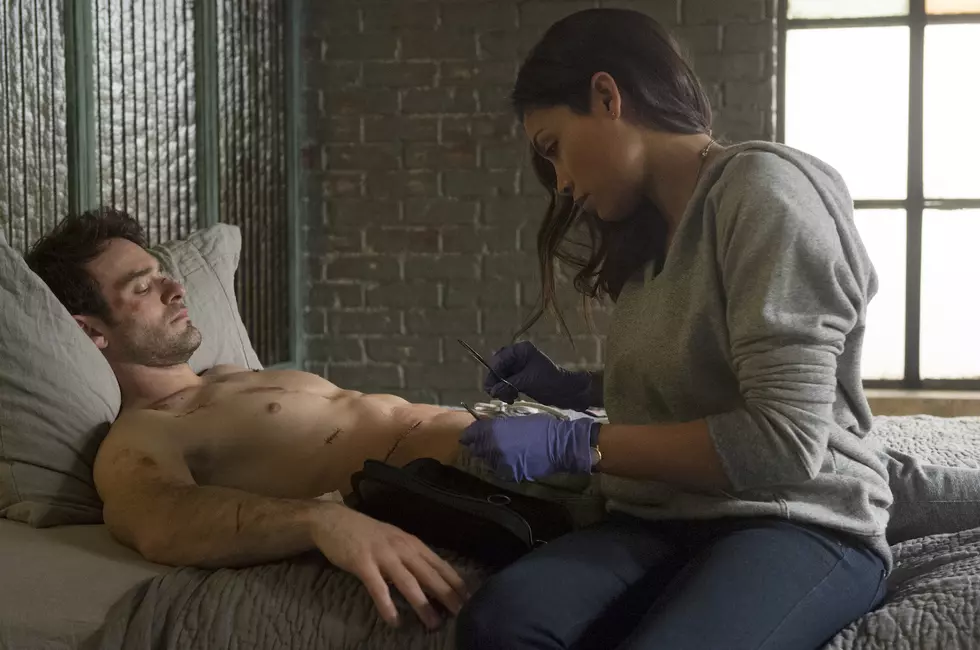
Reel Women: About That Rosario Dawson Nude Scene…
In Danny Boyle's 'Trance,' Rosario Dawson goes full-frontal much to the delight of many viewers, but the nudity is troublesome and lingers with you long after the film -- and not in a good way.
In 'Trance,' Rosario Dawson plays hypnotherapist Elizabeth Lamb, who de-fleeces her vagina before having sex with James McAvoy's Simon, a man who's gotten himself in a bit of trouble after he's misplaced a valuable piece of art he was supposed to help some bad guys steal. It's impossible to talk about why Dawson's nudity is so bothersome without discussing how problematic the film is: 'Trance' is a heist film, a con-artist story, a psychological thriller with twists and turns that tries to be stylistically abstract, and, finally, a sensual thriller with the most ridiculous twist (it's a love story, kind of!) since Tyler Perry's 'Temptation,' and that was only released two weeks ago.
'Trance' is so caught up in mashing up engaging tropes and crafting sharp 90 degree turns within its labyrinthine plot that it fails to understand a few things: first, these tropes have become so familiar that it's not enough to just employ them -- you have to create a meaningful story at the heart of all those gimmicks, a central conceit that the audience cares about or else all those gimmicks are just fancy bells and whistles accessorizing nothing. Second, Boyle is more concerned with crafting the twists and turns and dead-ends of his maze than he is with making sure there's a valuable end at the heart of it. You can lead people through a maze, but there has to be a reason why they're letting you guide them; there has to be a rewarding conclusion. And finally, because Boyle is mashing up so many tropes, the tone is as convoluted throughout as is, ultimately, the unfortunate third act -- a sequence that feels like Boyle is patting himself on the back for pulling one over on the audience, but instead he looks like a snake eating his own tail.
It's not Rosario Dawson's nudity itself that's bothersome -- it's her nudity in the context of this film. Meredith Borders at Badass Digest wrote a little about Dawson's nudity in 'Trance,' and why it bothered her:
While there is technically script justification for the lengthy exposure of Elizabeth's bare vagina, and while I am certainly no prude when it comes to nudity on film, something about this detail feels defiantly indecent. It's not only that 'Trance' makes the argument that a woman must shave her vagina to be considered beautiful. After all, that's Simon's point of view, and Simon's a jerk. Perhaps if Elizabeth's character were defined as something more than victim/villain (and this is in no way Dawson's fault, as she is the best part of the film in a quicksilver performance), her flaunted genitals would not rankle so.
In the film, Simon says that up until Goya unveiled his "La maja desnuda," women in paintings had been portrayed without pubic hair. He goes on to explain that pubic hair is impure and belies imperfection, while naked pubic regions illustrate the beauty, perfection, and purity of the female form. But that's Simon's opinion, and Simon is a character in the film and not a reflection of Boyle's own opinions.
The issue, as Meredith suggests, is that Dawson's character is ultimately a villain by extension and necessity of her victimization. When the offending scene takes place, Dawson is somewhat nebulously a villain -- our familiarity with the tropes used by Boyle here tells us that no one is to be trusted, certainly not this woman going around and hypnotizing everyone, and especially when hints are being dropped about those who are more susceptible to hypnotic suggestion, leading us to believe that Dawson's Elizabeth isn't the lamb she purports to be. Or is she? As the layers unfold only to reveal even more fruitless, empty layers, we discover her secret weakness, and at least twice Boyle uses flashbacks to Dawson's shaved vagina as she narrates the big reveal.
The bizarre dichotomy of Dawson's character and the overly-sentimental and soapy back story that's supposed to serve as an explanation for her function in the film only further dampen an already unsettling nude sequence. Again, by the time Dawson goes full-frontal in the film, we are not yet aware of this additional conceit that only exacerbates the existing problems with the nude scene -- problems that are difficult to articulate, but let's try:
In the middle of what appears to be the beginnings of your average hot and heavy sex scene (everything's a little slower and softer and melodramatic, and not at all like any real person has sex -- it's movie-sex), Elizabeth excuses herself to the bathroom where we hear the buzz of an electric razor. The film up to this point has already been tonally messy, so the scene is laughable; it feels like something out of a misguided romantic comedy, not a psychological art-heist/mind-heist thriller. When Elizabeth re-emerges, she is fully naked, and Boyle slowly pans the camera down her body to reveal her breasts, her stomach, and finally, her shaved vagina. We shouldn't be appalled by the naked form or sex in film, but we should be appalled by the way it's often artificially-sweetened to be more "palatable." Helen Hunt's nudity in 'The Sessions,' for instance, is great because the entire point of her incredibly honest nudity is to show John Hawkes' character that nudity and sex are nothing to be either afraid of ashamed of. But in 'Trance,' Dawson's nudity serves a very superficial purpose. Her bare vagina isn't meant to make us more comfortable with nudity by shocking us into submission -- instead, Boyle uses it as a crucial plot element.
To explain without spoiling: It's during that scene that the shift in momentum occurs and we start to understand how Elizabeth fits into this story. During the climax in the third act, Elizabeth is verbally unpacking the lackluster reveal, at which point the act of shaving her vagina is presented as the key to understanding everything that brought us to this point. In hypnosis, there is always a cue to awaken you from the trance, and Elizabeth's shaved vagina was that cue. And in case you don't get it, Boyle will show her nude vagina a couple more times to remind you.
Though the use of nudity in 'Trance' differs from the purpose of nudity in 'The Sessions,' the two films share an unfortunate similarity: in the latter, Hawkes' genitals are carefully obscured throughout the film, partially due to the director's rightful hesitance when considering the response from the MPAA. In 'Trance,' both co-stars Vincent Cassel and James McAvoy are completely naked at different points in the film, and it seems that the filmmakers went out of their way to ensure that their genitals remained impossibly covered and invisible. Bodies turn and rise from the sitting position at weird angles, reflections are manipulated, and even at times when you should see at least a shadow or hint of genitalia, there is magically none. The male form is kept elusively pristine, while the female form is magnified and literally laid bare before our eyes.
Dawson's nude vagina may not serve the purpose Danny Boyle intended (or at least attempted), but it does have some meaning, at least to this viewer. Dawson's shaved vagina serves as a symbol for Boyle's pretension -- he thinks he's created a clever, tricky film that sheds its layers to reveal something enticing and engrossing underneath, but what he's really done is create a film that sheds layers only to reveal a bald and meaningless foundation. When Dawson shaves her vagina, all that's left underneath is -- surprise, surprise -- a vagina. It doesn't symbolize anything meaningful or intelligent to anyone except for Danny Boyle. Who is a pretentious person really trying to impress, anyway?
More From ScreenCrush









